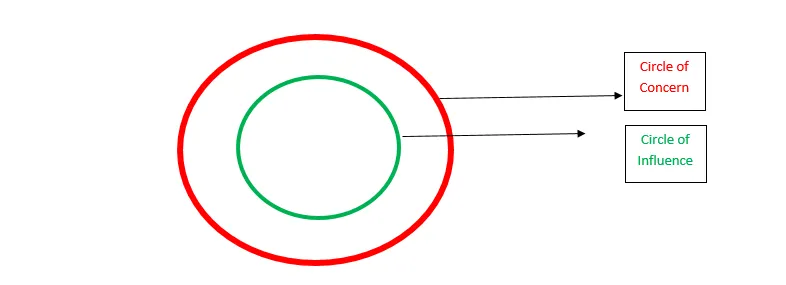The Circles of Concern and Influence
The world has changed the way we do business. Disruptive ideas are breaking down traditional methods of working, even affecting the way we impart education.
You no longer need to be physically present at a university to get a degree in computer programming. The massive open online courses or MOOCs have brought education to our laps, literally.
Fitness buffs can get, and stay, fit by simply strapping on a band that sends a feed to their mobile devices, allowing them access to all the health information they need at their fingertips.
In such a fiercely competitive world, companies must stay attuned to the shifting business landscape.
Courier logistics companies don’t recognise the challenge posed by food delivery apps and e-commerce companies, which have started courier pick up and drop services of their own, slowly eating into their pie.

In a landscape with limited capital, resources and physical spaces, the scenario can seem bleak for many businesses. Our constraints seem to only be increasing, while the solution space is decreasing. Let’s look at it this way: we have two circles, which Stephen Covey, author of ‘7 habits of highly effective people’ calls the ‘Circle of Concern’ and the ‘Circle of Influence’.

A) Circle of Influence: Within this circle are certain things that we can do something about at this very moment. For example, ramping up your production capacity, hiring more people, shutting those branches that are unprofitable or adding more distributors for your product. All these are within your circle of influence.
B) Circle of Concern: Within this circle are those events that concern and affect us, but about which we can do nothing at present, if at all. For instance, if you’re a bank, you’re going to be worried about whether a customer would default on a loan repayment, and you’d also want to know when they are likely to do so. Banks are also concerned about new technologies in the finance space, perhaps protected by patents, cutting into their business.
In essence, a Circle of Concern gives us sleepless nights.
The questions raised by the Circle of Concern not only keep us awake, they keep us from reaching our business objectives, thereby weakening us. So, what can we do to be proactive and not reactive?
Being proactive entails addressing those issues that can be resolved, and ignoring those that are clearly beyond our control. Considering the example of a bank, Business Analytics, or Decision Science, as one may call it, addresses some of those issues through the use of facts and figures. Not only does decision science address the business problems you’re met with on a daily basis, it subsequently helps increase the area of the Circle of Influence. If you can predict when a customer is going to default on their loan repayment, you can deny the loan. Thus, you’ve broadened your Circle of Influence while cutting into your Circle of Concern by bringing about a measure of control over debt defaulting.

Business is all about anticipation, and if you can anticipate correctly, you will be a winner.
REFERENCES
Circle of influence, circle of concern: 7 habits of highly effective people Stephen Covey
(Disclaimer: The views and opinions expressed in this article are those of the author and do not necessarily reflect the views of YourStory.)







